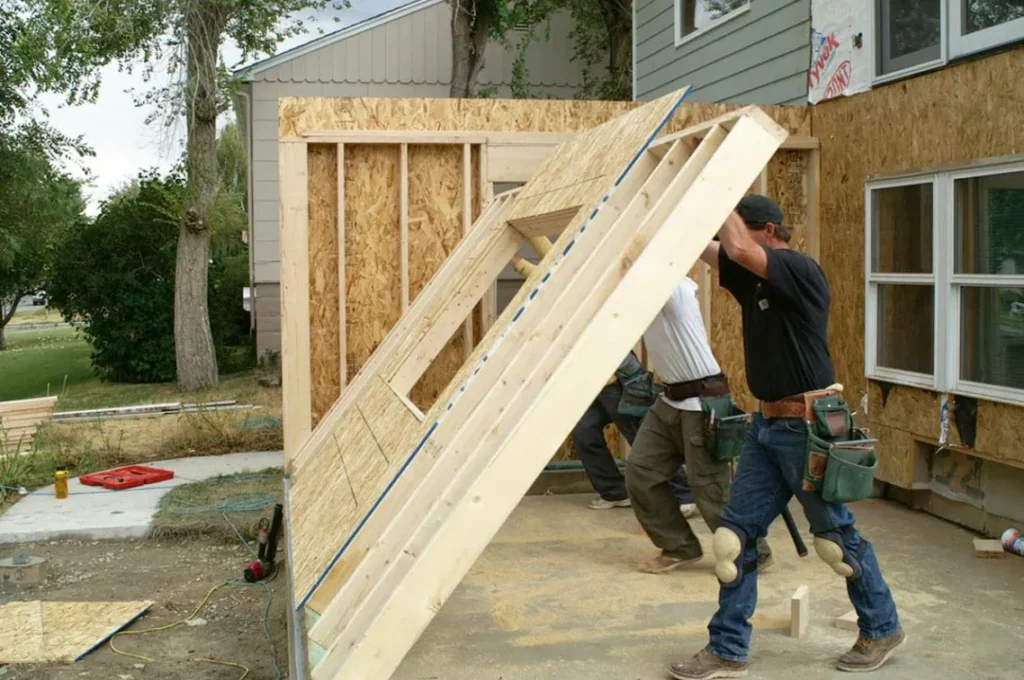Building an addition to your home can be a great way to add space and increase the value of your property. However, this process can also present several challenges that must be overcome before you can enjoy the benefits of your new addition.
Whether it’s zoning regulations and permits, structural limitations and challenges, or budget constraints and financing options, there are many obstacles that you may encounter during the building process.
One of the most common obstacles when building a room addition is navigating zoning regulations and obtaining necessary permits from local authorities. These regulations exist to ensure that buildings are safe for occupants, meet certain standards for construction materials and design, and do not negatively impact surrounding properties.
Failure to comply with these regulations can result in fines or even legal action against the homeowner. In addition to dealing with zoning officials, homeowners may also need to work with architects or contractors who have experience working within regulatory frameworks in order to successfully obtain necessary permits for their project.
Zoning Regulations and Permits
Compliance with local zoning regulations and obtaining necessary permits can pose significant challenges for individuals seeking to construct a room addition on their property. Zoning regulations are laws that govern land use, building size, height, setbacks, and other factors that affect the construction of a new structure. These regulations vary from one jurisdiction to another and may be complex and difficult to navigate without professional assistance.
To obtain the necessary permits, homeowners must submit detailed plans and specifications of the proposed addition to the local building department for review. The plans must comply with all applicable codes and standards, including fire safety, structural integrity, electrical wiring, plumbing systems, and energy efficiency.
The permit process can be time-consuming and expensive as it involves multiple inspections by various agencies throughout the construction process. Failure to comply with zoning regulations or obtain necessary permits can result in fines or legal action by local authorities. Therefore, it is essential for homeowners to work closely with experienced professionals who understand these requirements and can guide them through the process smoothly.
Structural Limitations and Challenges
The feasibility of expanding a house’s footprint can be constrained by the rigidity of its existing foundation, which acts as a bedrock for any future growth and must withstand the weight of new construction like a sturdy spine.
Structural limitations and challenges are common obstacles that homeowners face when considering an addition to their home. Here are some factors that can impact the structural integrity of an addition:
– Soil conditions: The type and quality of soil on which the house is built can affect the stability of its foundation. For example, expansive soils that shrink and swell with changes in moisture content can cause cracks in concrete slabs or walls.
– Load-bearing walls: Removing load-bearing walls without proper reinforcement can compromise the structural integrity of the entire house. It is important to consult with a structural engineer before making any modifications to load-bearing walls.
– Roof design: Adding an extension to a roof requires careful consideration of its pitch, shape, and materials. A poorly designed roof can lead to leaks, water damage, or even collapse under heavy snow loads.
– Building codes: Local building codes dictate minimum standards for safety and durability in construction projects. Failure to comply with these codes can result in fines or legal liabilities.
Homeowners should be aware of potential structural limitations and challenges when planning a room addition. Consulting with professionals such as architects, engineers, and contractors can help ensure that the project is feasible and meets all necessary requirements for safety and compliance with local regulations.
Budget Constraints and Financing Options
Budget constraints and financing options are critical considerations for homeowners who are contemplating a home expansion project. Room additions can be expensive, and the cost can vary depending on the size of the addition, materials used, labor costs, and any necessary permits or inspections.
Before beginning any work, it is essential to establish a budget that takes into account all of these factors. Homeowners should also consider their financing options, such as taking out a home equity loan or line of credit, refinancing their mortgage, or using personal savings.
When considering financing options, it is important to choose an option that fits within your current financial situation and long-term goals. For example, taking out a home equity loan may provide quick access to funds but could also lead to higher interest rates in the long run. Refinancing your mortgage may offer lower interest rates but could extend the life of your mortgage payment plan.
Ultimately, homeowners should carefully weigh their options before making any decisions about how to finance their room addition project.
Conclusion
In conclusion, building a room addition to your home can be a challenging process with various obstacles that need to be considered and overcome.
Zoning regulations and permits are critical factors that must adhere to the local laws and guidelines of the given area. Structural limitations and challenges may arise due to the foundation, walls, or roof design of the existing structure. These issues necessitate careful planning and consideration before undertaking any construction work.
Budget constraints and financing options also pose significant challenges in building an additional room. It is essential to have a realistic budget plan upfront that takes into account all possible costs associated with the project. Financing options such as loans or credit lines could help alleviate some of these financial burdens but require careful evaluation before making any final decisions.
As we have seen, building an additional room requires a thorough understanding of zoning regulations, structural limitations, budget constraints, and financing options. However, with adequate planning and preparation, these obstacles can be overcome successfully.
The key takeaway from this article is that it is crucial to seek professional assistance from experienced contractors who specialize in home additions for guidance throughout the entire process. With their expertise combined with proper planning and execution, homeowners can enjoy their new living space without hassle or worry about potential setbacks during construction.
The Procedures Involved In Building An Addition To A Room


